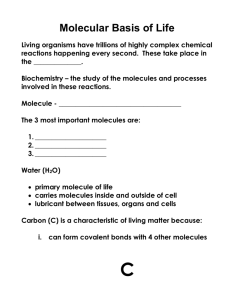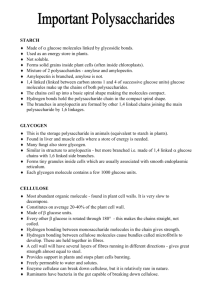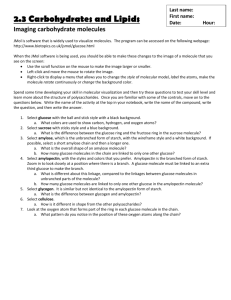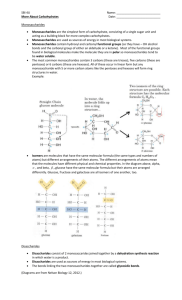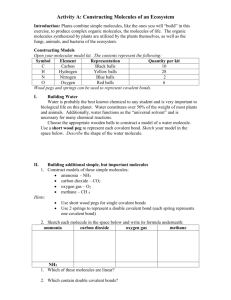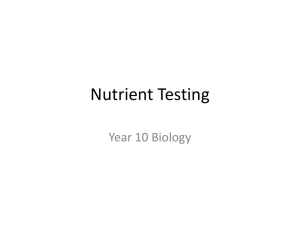(2.3 Molecular Visualization (14-15))
advertisement
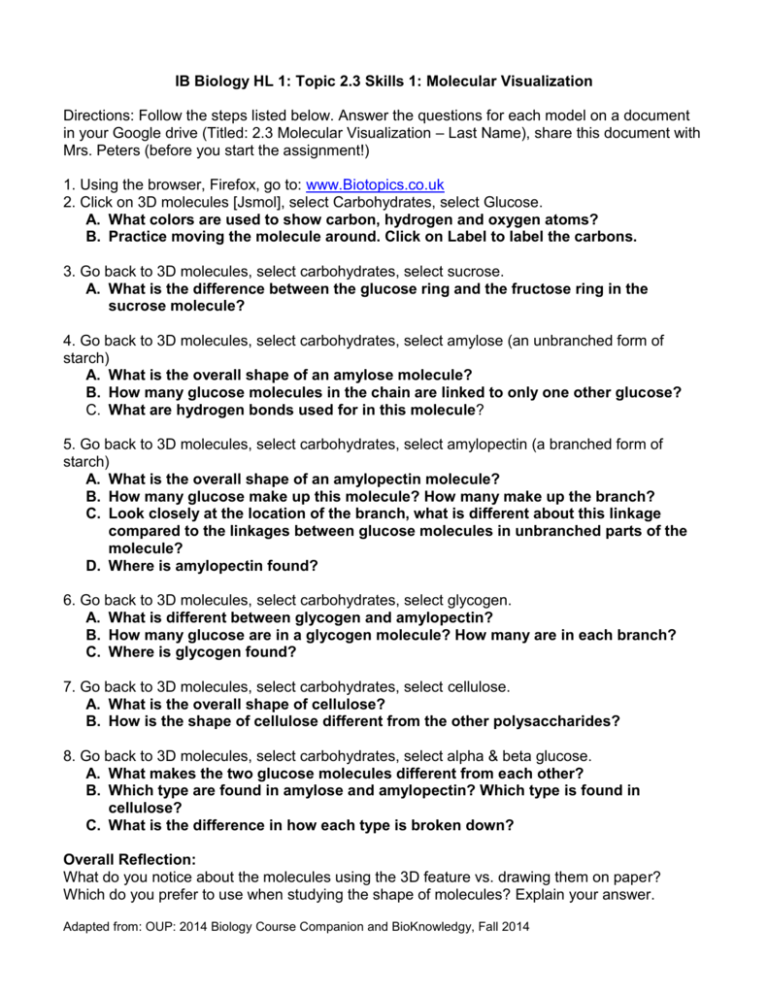
IB Biology HL 1: Topic 2.3 Skills 1: Molecular Visualization Directions: Follow the steps listed below. Answer the questions for each model on a document in your Google drive (Titled: 2.3 Molecular Visualization – Last Name), share this document with Mrs. Peters (before you start the assignment!) 1. Using the browser, Firefox, go to: www.Biotopics.co.uk 2. Click on 3D molecules [Jsmol], select Carbohydrates, select Glucose. A. What colors are used to show carbon, hydrogen and oxygen atoms? B. Practice moving the molecule around. Click on Label to label the carbons. 3. Go back to 3D molecules, select carbohydrates, select sucrose. A. What is the difference between the glucose ring and the fructose ring in the sucrose molecule? 4. Go back to 3D molecules, select carbohydrates, select amylose (an unbranched form of starch) A. What is the overall shape of an amylose molecule? B. How many glucose molecules in the chain are linked to only one other glucose? C. What are hydrogen bonds used for in this molecule? 5. Go back to 3D molecules, select carbohydrates, select amylopectin (a branched form of starch) A. What is the overall shape of an amylopectin molecule? B. How many glucose make up this molecule? How many make up the branch? C. Look closely at the location of the branch, what is different about this linkage compared to the linkages between glucose molecules in unbranched parts of the molecule? D. Where is amylopectin found? 6. Go back to 3D molecules, select carbohydrates, select glycogen. A. What is different between glycogen and amylopectin? B. How many glucose are in a glycogen molecule? How many are in each branch? C. Where is glycogen found? 7. Go back to 3D molecules, select carbohydrates, select cellulose. A. What is the overall shape of cellulose? B. How is the shape of cellulose different from the other polysaccharides? 8. Go back to 3D molecules, select carbohydrates, select alpha & beta glucose. A. What makes the two glucose molecules different from each other? B. Which type are found in amylose and amylopectin? Which type is found in cellulose? C. What is the difference in how each type is broken down? Overall Reflection: What do you notice about the molecules using the 3D feature vs. drawing them on paper? Which do you prefer to use when studying the shape of molecules? Explain your answer. Adapted from: OUP: 2014 Biology Course Companion and BioKnowledgy, Fall 2014
